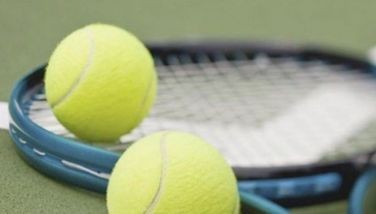Recruitment ups and downs
This early, some of the predicted frontrunners in college basketball are living up to expectations. In the NCAA, San Beda and San Sebastian are showing the way, while in the UAAP, Ateneo and Adamson have so far done the job. As it stands, the teams with better recruitment programs are – as of now – leading the way.
Back in the 1970’s, recruitment was based purely on basketball talent, never mind the academic capabilities. Coaches and their assistants scoured the provinces looking for that big man, enforcer, great shooter or speedy little point guard to gain an edge on the competition. In one instance, the entire starting unit of a championship team was lost to academic deficiencies the following year, and became the core of another title-contending team for another school after that.
Today, there are measures in place against player poaching. The UAAP and NCAA each require a two-year residency for student-athletes coming from schools in the same league, and one year for players transferring from the other league. All schools claim strict academic standards for players. And, of course, coaches and their staffs provide the last line of discipline.
Recruitment is now more thorough (some would say desperate), and competitive. I know of players who actually chose one league over the other simply because they want higher television ratings. They believe this will help them get better offers from PBA teams later on. That’s just one item in a laundry list of leverage tools used by schools to recruit.
Winning is a great magnet, for players, most of the time. Few stars want to hear the word “rebuilding” used in a situation they are entering. Some, though, would rather be in a lower-seeded school to get more playing time and prove themselves. The fact of the matter is that a couple of the more competitive collegiate schools overdo recruitment, and have up to 30 players on their B team alone.
The best place to recruit is often your own backyard. Before San Beda broke its NCAA championship drought five years ago, many of its high school championship players were being pulled away by other schools, especially in the UAAP. That practice has since been minimized, and the Red Lions have won four of the last five NCAA men’s basketball titles. Ateneo has also made it a practice to keep the cream of its high school title teams, as well. Meanwhile, teams like San Sebastian go to the same well for more, which for them is Pampanga. They’ve already won one NCAA title and came close to getting another through this method.
Other schools acquire more experienced players from smaller leagues, hoping to shorten the gestation period and skip a step in the development process. When Dindo Pumaren was coach in UE, he had players who had already ripened on other college teams. The trade-off was experience for longevity, since players have only a maximum of five playing years or until they hit the age of 25 to play in the UAAP and NCAA.
The biggest change in recent years is the search for a dominant foreign big man. Gone are the days when foreign students were tall and clumsy or didn’t know how to play the game. Now, they’re at least agile and athletic, and easy to teach. Now scouts are prowling chatrooms and other websites and asking around for brothers, sons or nephews of former pros or college standouts who migrated overseas. But the pickings may be slim. How many imports like Bobby Parks stay long enough to start a family with a Filipina spouse? So some coaches just outright go to another country like Cameroon and try their luck. They’re only looking for someone to suit up for the next three to five years anyway.
However, the downsides are universal, whether a player comes from this country or not, eligibility, attitude and health are always the biggest factors to determine success. Philippine Christian University was sanctioned for using players who did not submit the proper documents in an attempt to mask to their ineligibility. For schools that wish to gamble, the one-year residency is worth it. With the continuity from Sam Ekwe to Sudan Daniel, San Beda has maintained its lofty status, though the coaching system also must share the credit.
Like in anything, personal conflicts also crack the armor of many contenders. Supposedly, Jose Rizal University’s Nchotu John Njei developed an attitude, and left the squad, taking his 6’8” countryman Joe Etame with him. Etame, for his part, was a project player who never panned out, because he was never fully healthy.
Recruitment is always a gamble, putting a player in a new environment often reveals his values and attitude, and how he responds to adversity and discipline. For some varsity teams, though, this doesn’t happen overnight, so the impact is greater than it should be. As they say, adversity introduces a man to himself.
And the rest of the team.
- Latest
- Trending



























